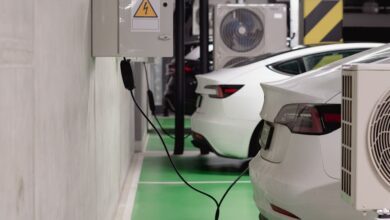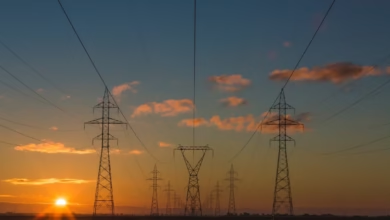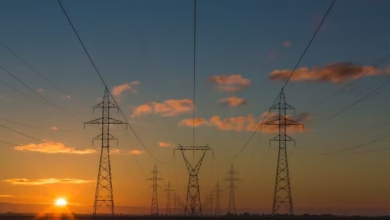Harnessing Carbon Capture and Storage: Pioneering Technologies for a Sustainable Energy Future

As the world grapples with the urgent need to combat climate change, carbon capture and storage (CCS) technologies have emerged as a pivotal solution in the quest for sustainable energy. By capturing carbon emissions from fossil fuels and other sources, CCS plays a crucial role in transforming our energy landscape, paving the way for greener alternatives. This article explores the innovative carbon capture technologies that are revolutionizing how we utilize fossil fuels, while also highlighting CCS's integral role in the broader energy transition toward renewable energy sources. We will delve into how these advancements not only enhance energy efficiency but also align with global energy trends, shaping energy markets and influencing energy policy. As we navigate the complex interplay between fossil fuels, nuclear energy, and renewable resources like solar power, wind energy, and hydropower, it becomes clear that carbon capture is essential for achieving energy security and fostering a sustainable future. Join us as we uncover the future trends in energy investment, energy R&D, and the promising potential of hydrogen energy, smart grids, and energy storage solutions in the battle against climate change.
- 1. Innovative Carbon Capture Technologies: Transforming Fossil Fuels into Green Energy Solutions
- 2. The Role of CCS in the Energy Transition: Enhancing Energy Efficiency and Reducing Climate Change Impact
- 3. Future Trends in Energy Markets: How Carbon Capture and Storage Aligns with Renewable Energy and Energy Policy
1. Innovative Carbon Capture Technologies: Transforming Fossil Fuels into Green Energy Solutions
Innovative carbon capture technologies are at the forefront of transforming fossil fuels into viable green energy solutions, playing a crucial role in the global energy transition. As nations grapple with the urgent need to address climate change, these advancements are essential for reducing carbon emissions while maintaining energy security and efficiency.
One of the most promising innovations in carbon capture is the development of direct air capture (DAC) systems, which extract CO2 directly from the atmosphere. This technology, combined with renewable energy sources like solar power and wind energy, can create a circular economy where captured carbon is repurposed into clean fuels or stored safely underground. The integration of DAC with smart grids enhances energy efficiency by optimizing energy usage and reducing reliance on fossil fuels.
Moreover, advancements in bioenergy with carbon capture and storage (BECCS) present another pathway to decarbonize energy markets. By utilizing biomass for energy production and capturing the resultant emissions, BECCS can contribute to negative emissions targets while supporting energy exports. This approach aligns with energy policies aimed at promoting sustainable energy investments and enhancing energy resilience.
Nuclear energy also plays a pivotal role in the carbon capture narrative. Innovations in small modular reactors (SMRs) provide a flexible solution for energy storage and can complement other renewable sources, ensuring a stable energy supply while reducing reliance on fossil fuels. As the energy landscape evolves, the incorporation of thermal energy systems in conjunction with carbon capture technologies will further enhance energy economics and foster an environment conducive to distributed energy solutions.
Additionally, the emergence of hydrogen energy as a clean energy carrier underscores the significance of carbon capture in facilitating the energy transition. By harnessing captured CO2 to produce green hydrogen, we can create a sustainable fuel that supports electric vehicles and other energy-intensive sectors, thus driving forward energy innovations.
In summary, innovative carbon capture technologies are essential for transforming fossil fuels into sustainable energy solutions. By leveraging advancements across various energy sectors, we can not only tackle climate change but also ensure a secure and resilient energy future. The ongoing commitment to energy R&D will be crucial in advancing these technologies and achieving a greener, more sustainable energy landscape.
2. The Role of CCS in the Energy Transition: Enhancing Energy Efficiency and Reducing Climate Change Impact
Carbon Capture and Storage (CCS) plays a pivotal role in the global energy transition by enhancing energy efficiency and mitigating the impacts of climate change. As energy markets shift towards a more sustainable paradigm, CCS technology emerges as a critical tool for reducing emissions from fossil fuels while facilitating the integration of renewable energy sources.
With the ongoing reliance on fossil fuels for energy generation, the need for a comprehensive strategy to manage carbon emissions becomes increasingly urgent. CCS allows for the capture of carbon dioxide (CO2) emitted from power plants and industrial processes, preventing it from entering the atmosphere. This capability is essential for maintaining energy security while transitioning to greener energy alternatives such as solar power, wind energy, and hydropower.
In the context of energy policy, CCS supports the transition towards a low-carbon economy by providing a bridge between current fossil fuel usage and future renewable energy solutions. By investing in energy R&D focused on CCS technologies, countries can enhance their energy efficiency and reduce their climate change impact effectively. Furthermore, CCS can complement other innovative solutions like hydrogen energy and bioenergy, creating a more resilient energy system.
The integration of smart grids and distributed energy systems further amplifies the benefits of CCS. These technologies improve energy transportation and storage, making it feasible to manage fluctuating energy supplies from renewable sources more efficiently. As energy innovations continue to evolve, CCS stands as a cornerstone for balancing the demand for energy with the necessity of reducing greenhouse gas emissions.
Ultimately, effective implementation of CCS will not only drive down emissions but also position nations to better engage in energy exports and imports as global energy trends shift. By embracing CCS, we can move towards a future where both energy efficiency and climate goals are achieved, fostering sustainable economic growth while addressing the pressing challenges of climate change.
3. Future Trends in Energy Markets: How Carbon Capture and Storage Aligns with Renewable Energy and Energy Policy
As the world grapples with climate change and the urgent need for sustainable energy solutions, Carbon Capture and Storage (CCS) technology is emerging as a pivotal player in the energy markets. The growing alignment of CCS with renewable energy sources and evolving energy policies reflects broader global energy trends that prioritize energy efficiency and sustainability.
One of the most significant future trends in energy markets is the integration of CCS with renewable energy systems. As countries ramp up investments in green energy, including solar power, wind energy, and hydropower, CCS offers a complementary solution that allows for the continued use of fossil fuels while mitigating their environmental impact. By capturing carbon emissions from fossil fuel power plants and industrial processes, CCS can significantly reduce greenhouse gas emissions, facilitating a smoother transition to a low-carbon future.
Moreover, the energy transition is supported by innovative energy policies that incentivize the adoption of CCS technologies. Governments around the world are recognizing the importance of energy security and the need for diversified energy portfolios that include renewable sources, nuclear energy, and energy storage solutions. This shift not only enhances energy imports and exports but also fosters energy innovation, paving the way for new business models in energy economics.
As the energy landscape evolves, CCS also aligns with the rise of distributed energy systems. These systems, which enable localized energy generation and consumption, are crucial for enhancing energy resilience and efficiency. The integration of CCS with smart grids and energy transportation networks can optimize the use of thermal energy and hydrogen energy, further supporting the decarbonization of energy markets.
In summary, the future of energy markets is increasingly intertwined with carbon capture technologies as part of a holistic approach to climate change mitigation. By aligning CCS with renewable energy initiatives and robust energy policies, stakeholders can ensure a sustainable energy transition that prioritizes environmental health, economic viability, and energy security for future generations.
In conclusion, Carbon Capture and Storage (CCS) emerges as a pivotal technology in the fight against climate change, effectively transforming fossil fuels into viable green energy solutions. As highlighted in our discussion, innovative carbon capture technologies are not only enhancing energy efficiency but also playing a crucial role in the broader energy transition. By integrating CCS with renewable energy sources such as solar power, wind energy, and hydropower, we can foster a more sustainable energy landscape that aligns with evolving energy policies and global energy trends.
Looking forward, the alignment of CCS with future energy markets and investments underscores its importance in achieving energy security and reducing reliance on fossil fuels. As we advance toward a cleaner energy future, the incorporation of smart grids, hydrogen energy, and other energy innovations will be essential in maximizing the benefits of carbon capture. The potential for CCS to complement nuclear energy, bioenergy, and thermal energy further exemplifies its versatility in addressing energy economics and climate change.
As we move forward, it is imperative to continue investing in energy R&D and exploring distributed energy solutions that can enhance energy storage and transportation. By prioritizing carbon capture technologies, we can not only mitigate the impact of climate change but also pave the way for a sustainable and resilient global energy system, ultimately benefiting energy exports and imports alike. The journey toward a greener, more efficient energy future is underway, and CCS will undoubtedly be at the forefront of this transformation.
References:
[Insert relevant references here]




